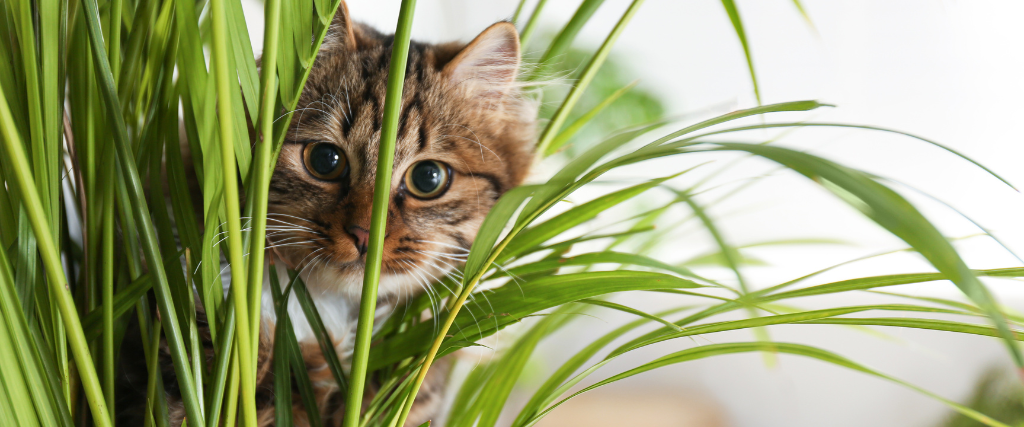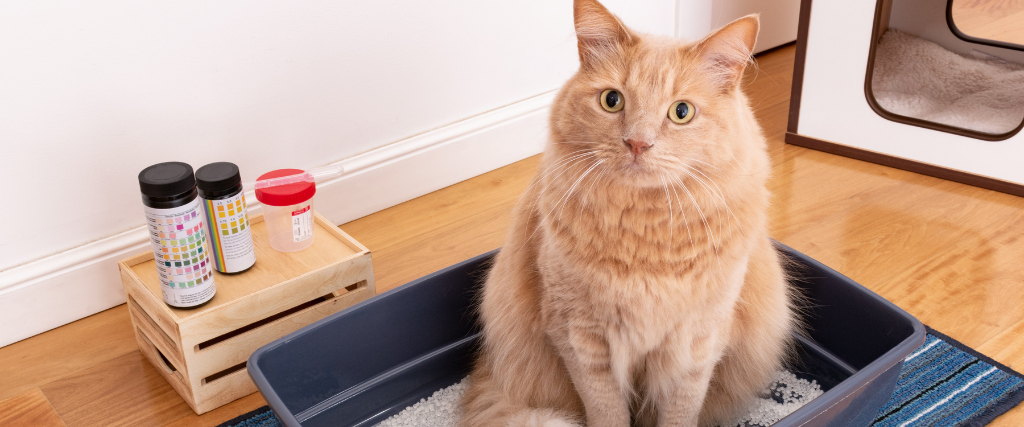Feline urinary obstruction (FUO) is a very common disease in male cats that are often overlooked or missed by owners until the cat is very sick. When a cat gets a urinary obstruction, it becomes a life-threatening emergency. If left untreated, your cat will die. The earlier a urinary obstruction is recognized and corrected the better the prognosis is for the cat. When a urinary obstruction occurs, it causes urine to back up into the bladder since the cat is not able to urinate. This can lead to acute kidney failure, electrolyte abnormalities, possible life-threatening cardiac arrhythmias, and in extreme cases rupture of the bladder.
Feline urinary obstructions are more common in male cats than female cats. This is because male cats have long narrow urethra that can easily get blocked. Unlike male cats, female cats have short and wide urethras that allow them to pass urinary crystals and small urinary stones much easier. Urinary obstructions can happen in dogs, but it’s not very common when compared to cats.

What Are The Signs Of Feline Urinary Obstructions?
Common clinical signs in male cats are frequent visits to the litter box with very little or no urine production, urinating small amounts of bloody urine, excessive grooming of the penis, lethargy, decreased appetite, vomiting, yowling (especially while in the litter box), or trying to urinate in strange places (i.e. on the carpet, in potted plants, etc.). The clinical signs that clients often mention to me are that their cat yowls while in the litter box, does excessive grooming of the penis, produces little or no urine and they see blood in the litter box.
What causes the urethra to become obstructed in cats? Most commonly the urinary obstruction is caused by either urinary crystals or small urinary stones. The two most commonly seen urinary crystals and stones in cats are calcium oxalate and struvite. Both form when the pH of the cat’s urine is either too acidic or basic. The pH determines which type of urinary crystal or stone the cat will get. Cats can also get urinary obstructions from mucous plugs and blood clots. Both mucous plugs and blood clots are usually formed secondarily to an underlying issue such as crystals, stones, cystitis, etc.
If you notice that your cat may be exhibiting signs of urinary obstruction, the first thing to do is call your veterinarian. Your veterinarian will most likely get you in right away for an appointment. Upon arrival at the veterinary clinic, your veterinarian will get a thorough medical history and do a physical exam. Cats with urinary obstructions will often have a very large firm bladder. Your veterinarian will probably do blood work on your cat. Many cats that are suffering from a urinary obstruction will have abnormalities in their kidney and electrolyte values. It’s important to get the starting electrolyte values. After blood work is obtained, your veterinarian will most likely place your cat under general anesthesia in order to pass a urinary catheter in the urethra and remove the urinary obstruction. Once the urinary catheter is placed, the bladder is able to empty. A urine sample will be collected in order to see if there are urinary crystals and what type they are. Most cats will be hospitalized to monitor urine output and to receive IV fluid therapy to help return the cat’s kidney and electrolyte values back to normal. In cases where the cat has had a urinary obstruction for a long time, permanent damage to the kidneys can occur.

How To Care For A Cat With A History Of Urinary Obstructions
Since most cats get urinary obstructions from urinary crystals, a special lifelong diet will be needed. There are several prescription urinary diets available to help dissolve struvite crystals and prevent the formation of struvite and calcium oxalate crystals. If your cat has calcium oxalate stones, surgery may be needed since this type of stone cannot be dissolved with diet change alone. These special prescription urinary diets help regulate the pH of the cat’s urine and increase drinking so that the bladder is being flushed out more often. Every now and then there will be a cat that chronically has urinary obstructions. For these cats a special surgery known as Perineal Urethrostomy can be done which essentially reroutes the urethra so that the cat has a short and wide urethral opening like a female cat.
We don’t know why some cats are more prone to urinary obstructions than others. In my experience, it tends to happen in young male cats (typically between 2-7 years of age). I’ve also seen it happen with cats fed anything from cat chow to very expensive high-end food. My own problem child cat Jack was on a very expensive high-end food when he got his urinary obstruction. Luckily for Jack, when he obstructed, I caught it early because I was in the middle of studying for third-year veterinary school midterms. Ironically one of the midterms I was studying for was for my renal class and one of the topics was urinary obstructions. While I was studying, Jack kept going in and out of the litter box and producing nothing. After this went on for about an hour, I took him to the vet school on emergency (because of course it was on a Saturday night). He was successfully unblocked and treated. Jack has been managed with a prescription urinary diet for eight years.
Urinary obstructions in cats can be life-threatening if they go undetected. If you notice the clinical signs listed above in your cat, call your veterinarian right away. The worse (or best case scenario) is that your cat only has a urinary tract infection. Feline urinary obstruction is one of the illnesses that cats get that shouldn’t be ignored. Don’t do the wait-and-see approach since it could cause permanent damage to your cat’s kidneys and potentially cost him his life.

